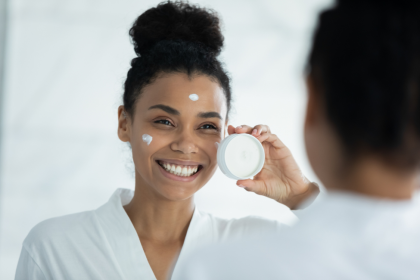Ancient evergreens reportedly developing superiority complexes over their seasonal status

The great evergreen identity crisis
In an unexpected twist that has left both ornaments and religious scholars scrambling for answers, Christmas trees across America are reportedly experiencing an unprecedented level of self-importance. What was once a silent, stoic presence in living rooms nationwide has evolved into an increasingly smug and judgmental fixture that now gives side-eye to other holiday decorations. The trees, it seems, have learned about their controversial religious status and aren’t afraid to flaunt it. Some are even claiming that their spiritual and cultural significance stretches beyond what was previously understood, making them feel superior to anything that dares share space on a holiday mantle.
Christmas trees get woke
Local Christmas trees have begun to form support groups, holding meetings where they discuss their complex cultural and historical heritage. These trees—once content with being trimmed with tinsel and adorned with stars—now wrestle with the knowledge of their ancient roots. One particularly outspoken Douglas fir proudly announced, “You know, my roots go way back. I have pre-Christian ties to Egyptian solstice celebrations.” This newfound sense of self-awareness seems to have ignited debates among trees about their true identity. While some trees eagerly embrace their connection to the distant past, others are less sure about how to align themselves with modern-day Christmas celebrations, especially given their now-controversial status in the religious and secular communities.
Biblical scholars face palm over literal interpretations
As Christmas trees dive deeper into their cultural and historical identity, biblical scholars are grappling with the unintended consequences. The prophet Jeremiah’s ancient warning about the dangers of decorating trees with silver and gold is suddenly being reinterpreted in ways no one saw coming. “Jeremiah was definitely not anticipating the birth of dollar store tinsel or the artificial trees from Target,” said Dr. Brian Jacobs, a leading biblical scholar. “In context, it was a warning against idol worship, not an anti-Christmas-tree manifesto.”
But as trees start to take their place in the debate about idolatry, some are beginning to look down on the literal interpretations of scripture. The once-silent evergreens are now actively protesting when scholars claim that their festive embellishments are akin to idol worship. “The idea of worshipping a tree with baubles seems absurd,” Dr. Jacobs sighed, rolling his eyes. “But here we are.”
The Leviticus loophole
In a particularly bold move, certain trees have started citing Leviticus 23:40 as their biblical justification. “We’re just splendid trees fulfilling our divine purpose!” exclaimed a particularly sprightly spruce in Ohio. “According to Leviticus, it’s totally acceptable to celebrate the beauty of trees, as long as we’re doing it in a holy manner. So, why not with flashing lights and Christmas carols?”
Critics, however, aren’t so easily swayed. “Look, no one’s saying that a Christmas tree is inherently sinful,” said Jessica Milligan, a self-proclaimed Christmas purist. “But covering yourself in flashing LED lights and spinning around while ‘Rockin’ Around the Christmas Tree’ blares from the speakers? That’s not exactly what the ancient texts had in mind. Trees are supposed to be revered, not reduced to a backdrop for selfies.”
Modern identity politics in the forest
The real struggle for Christmas trees comes from balancing their multifaceted identity as both sacred symbols and seasonal decor. While some trees are quick to embrace their spiritual role, others seem more inclined to embrace their role as Instagram props for family photos. According to reports, some trees are growing tired of the dual identity forced upon them by modern society.
“They’re always dragging me out of storage, decking me out in lights and baubles, and then posing in front of me like I’m some sort of backdrop,” a particularly fed-up pine in suburban New Jersey complained. “They snap their photos and then leave me alone for the rest of the month. I get zero respect for my deeper meaning!”
Meanwhile, other trees continue to hold on to their sacred role with stubborn resolve, quietly judging those who merely treat them as a seasonal object of beauty.
The great tradition standoff
The annual Christmas debate over how many ornaments are “too many” has taken on a new layer of tension this year. Trees are said to have begun keeping track of how often their religious significance is acknowledged during holiday gatherings. With a mix of passive aggression and martyrdom, they drop needles in silent protest when their deeper meaning is overlooked in favor of sparkly tinsel. The trees are making it known: they’re not just there to look good. They want respect.
In fact, the trees themselves have started an unofficial competition, where the most decorated ones proudly declare, “I am the true embodiment of holiday spirit!” The lesser adorned trees, meanwhile, sit in silent indignation. “If you’re not going to recognize my true cultural value,” one tree sighed, shedding a particularly dramatic needle, “I’ll just make you clean it up.”
A needle-y situation
At the end of the day, the debate about whether Christmas trees are religious icons or mere holiday decorations continues to divide both families and scholars. One thing, however, is clear: the trees have developed an impressive ego for something that spends 11 months of the year either in storage or awaiting its inevitable date with a chainsaw. The holiday season is now defined by these evergreens asserting their relevance, demanding acknowledgment for their historical significance, and, if nothing else, asking for a little respect in return for their yearly service.
As we move closer to the holiday season, it’s advised that families approach their trees with mindfulness. No one knows when the next drop of pine needles might be a well-timed protest to ensure that these trees—whether adorned with golden garlands or humble strands of lights—are appreciated for both their festive spirit and their ancient roots. Be careful; you might just find that your Christmas tree has something more to say this year than just, “Ho ho ho.”













